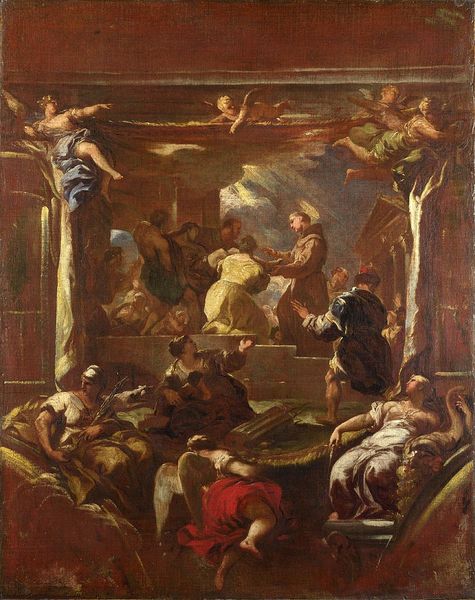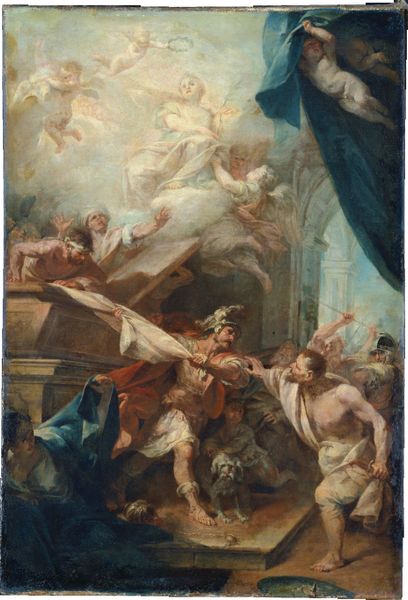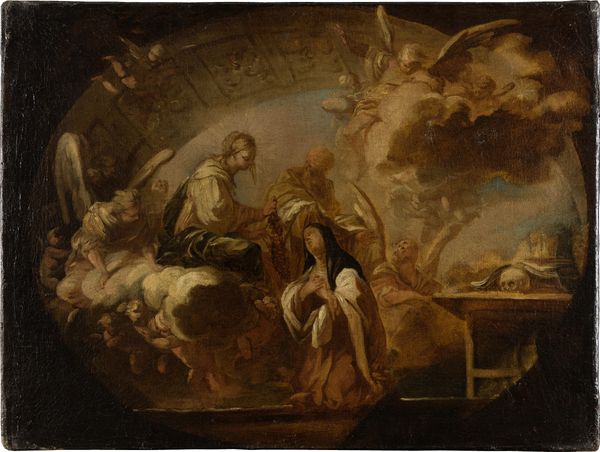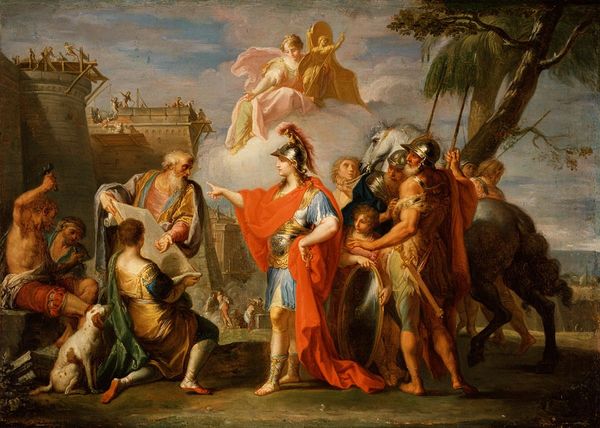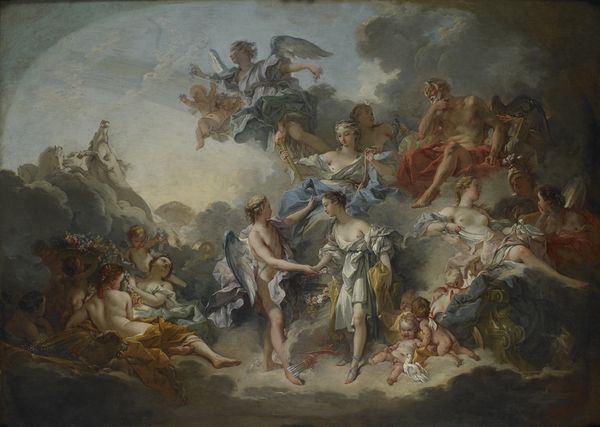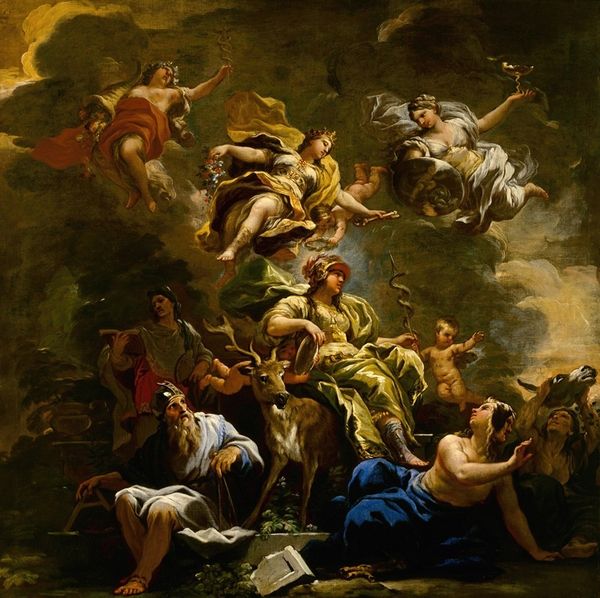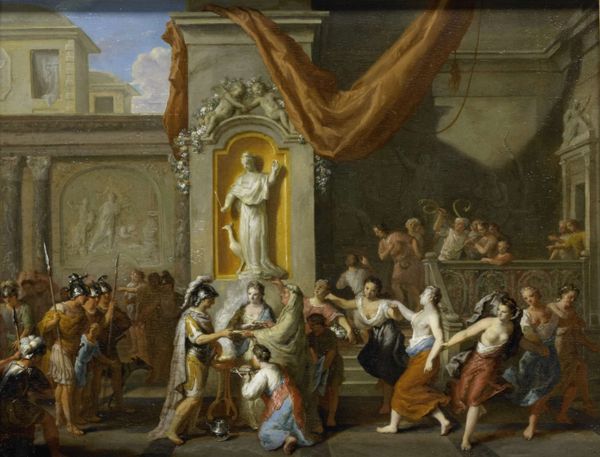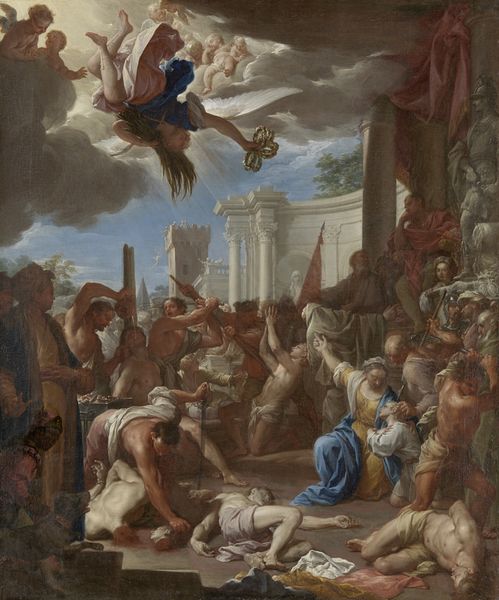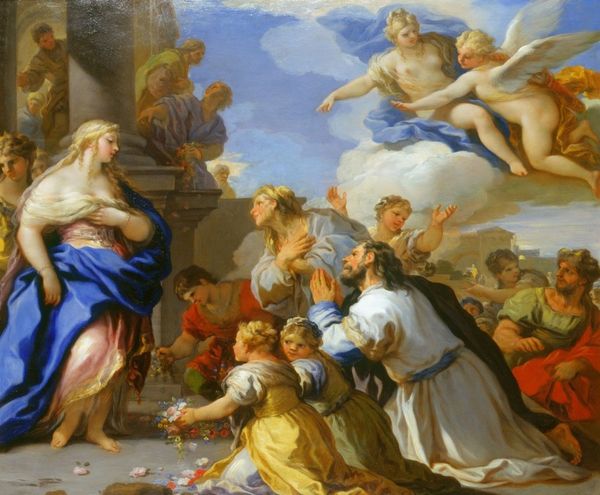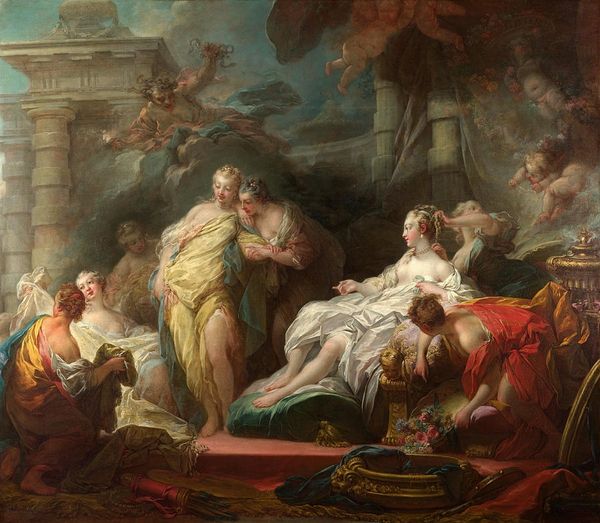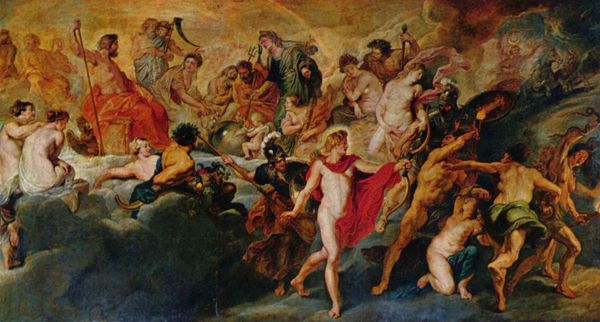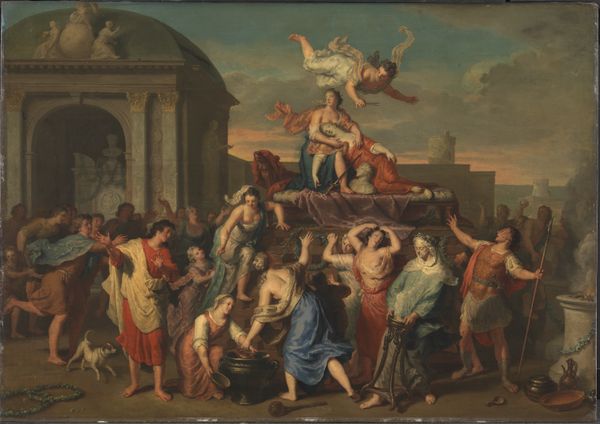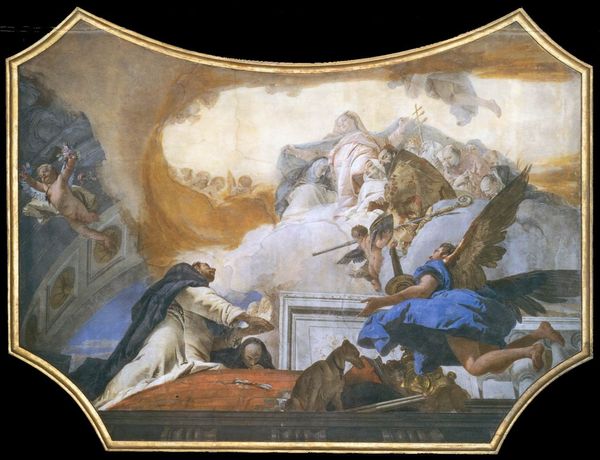
A Representation of the Liberal Arts: Ceiling Design for the State Dining Room at Grimsthorpe Castle c. 1724
0:00
0:00
Dimensions: support: 613 x 762 mm frame: 755 x 613 x 72 mm
Copyright: CC-BY-NC-ND 4.0 DEED, Photo: Tate
Curator: This piece, created by Francesco Sleter in the 18th century, is titled, "A Representation of the Liberal Arts: Ceiling Design for the State Dining Room at Grimsthorpe Castle." Editor: It feels like a dream, a sort of celestial gathering. Are these figures meant to be goddesses of wisdom and art floating amidst the clouds? Curator: Precisely! Sleter invokes classical iconography to symbolize the liberal arts, reflecting the values and aspirations of the aristocratic patron. Notice the allegorical figures in the lower register, seemingly engaged in creative pursuits. Editor: The composition feels very performative, everyone posed just so. A bit theatrical, don’t you think? As if the arts are a spectacle, a public demonstration of refinement. Curator: I see your point. Sleter is indeed presenting the arts as a demonstration of the patron’s cultivation and good taste. It's an aspirational vision. Editor: Ultimately, I find something compelling about this idealized vision—an era where art and learning were not just valued, but celebrated as essential to the good life.
Comments
tate 8 months ago
⋮
http://www.tate.org.uk/art/artworks/sleter-a-representation-of-the-liberal-arts-ceiling-design-for-the-state-dining-room-at-t03465
Join the conversation
Join millions of artists and users on Artera today and experience the ultimate creative platform.
tate 8 months ago
⋮
Minerva, the goddess of wisdom and the arts, and Mercury, associated with reason and learning, appear at the top of this triangular composition. They are surrounded by figures representing different aspects of knowledge and the arts.This is a preliminary design for the ceiling of the State Dining Room at Grimsthorpe Castle, Lincolnshire. The Venetian-born artist, Sleter, had trained as a decorative artist in Italy before moving to London where he worked until the end of his life. This was unusual since most decorative artists pursued itinerant careers across Europe. Gallery label, May 2007
